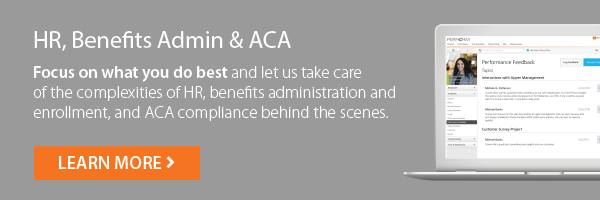Amidst the ongoing labor shortage, employers are on the lookout for any edge in the fight to attract—and retain—top talent. Companies are getting creative about benefits just to stay competitive. With student loan debt skyrocketing, repayment programs can be an attractive perk. The good news is, there’s still time to make an affordable investment in these programs.
Student Loan Repayment Programs: Tax-Free for Another Year
Through 2025, employers can offer up to $5,250 in student loan repayment benefits without paying a dime in tax. This is thanks to the Consolidated Appropriations Act, which was signed into law in 2020 as part of pandemic relief efforts. A bipartisan bill was recently introduced to extend this benefit indefinitely, but it’s not yet gone to vote.
More and more employers are offering some form of loan repayment support. In 2021, only 17% of companies offered any of these benefits. By October 2023, 34% of employers offered student loan benefits.
The Student Loan Epidemic
Nearly 43 million Americans owe more than $1.7T in student loans. It’s currently the fourth highest U.S. debt category—behind mortgages, car loans, and credit card debt. The average federal student loan debt balance is nearly $38K, while the total average balance (including private loan debt) is $40,681. A staggering 20% of all American adults with undergraduate degrees also have student loan debt. It’s easy to see why student loan repayment benefits could attract job candidates.
One Benefit to Employers: 5 Years of Employee Loyalty
Companies that offer student loan debt relief can attract and retain talent more easily. In fact, studies indicate that 86% of workers would commit to an employer for five years if the employer offered student loan support.
These benefits can also play a role in employee engagement. By alleviating your workers’ financial stress you can free up their time and energy, helping them be more successful at work.
5 Tips to Help Employees Repay Student Loans
A student loan repayment benefit program can help you recruit the brightest and the best to your company. The easiest way to set one up is through a financial organization that offers program management. But if you’d rather do it yourself, consider these tips:
- Determine the monthly payments you want to contribute. Most organizations start with $50-100. While this might sound like a small amount, it can save employees thousands of dollars in interest.
- Set a cap on the maximum amount you’ll contribute.
- Figure out who will be eligible to receive the benefit. Keep in mind that the nondiscrimination rules that apply to other benefits programs—such as 401(k) plans and health insurance—do not apply to student loan repayment programs.
- Decide if you want to require a specific work commitment from the employee in exchange for loan repayment assistance.
- Remember, if the student loan repayment benefits exceed $5,250 annually, any excess amount is considered to be wages. That amount will be subject to federal income and payroll tax withholding.
401(k)s and Student Loan Repayments: Recent Updates
Back in 2018, the IRS approved a novel method Abbott Laboratories developed to help its employees pay off their student loan debt. They make a matching contribution that equals 5% of the employee’s compensation if:
- the employee makes a contribution to their 401(k) that equals at least 2% of their compensation, or
- the employee makes a student loan payment that equals at least 2% of their compensation (even if the employee doesn’t contribute to their 401(k).
This program is an attractive benefit, especially for employees whose hefty loan payments get in the way of saving for retirement. Employers can help them pay off loans without sacrificing an employer retirement match. And because the company’s contributions are payroll tax-free and not subject to federal income tax withholding, the program offers significant tax advantages.
How Paycor Helps
Paycor builds HR solutions for leaders. With Paycor, you can modernize every aspect of people management, from the way you recruit, onboard, and develop your team to the way you pay and retain them. See how Paycor can help the leaders of your organization solve the problems of today and tomorrow.he way you pay and retain them. See how Paycor can help the leaders of your organization solve the problems of today and tomorrow.










